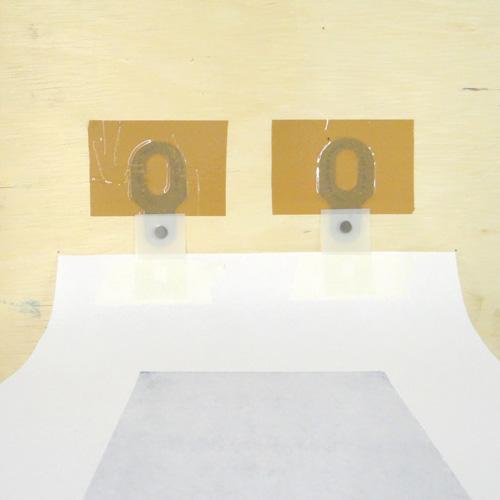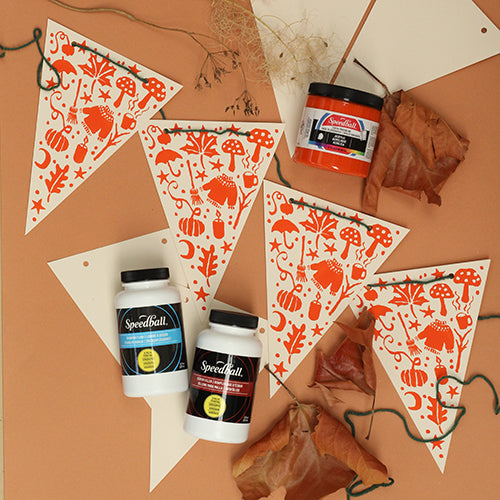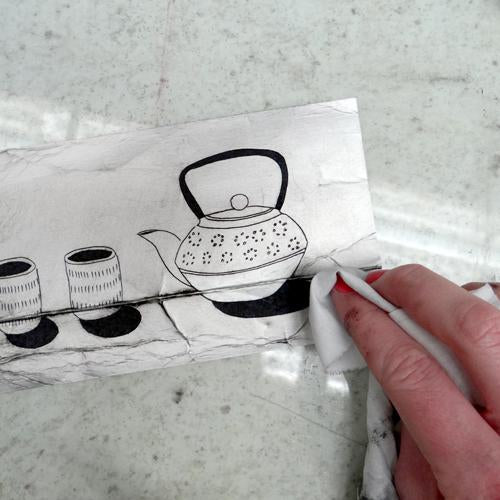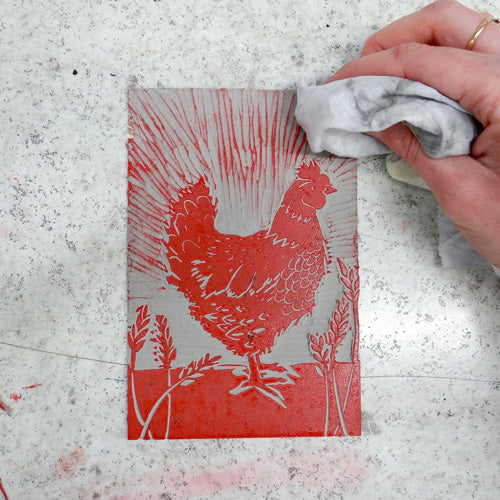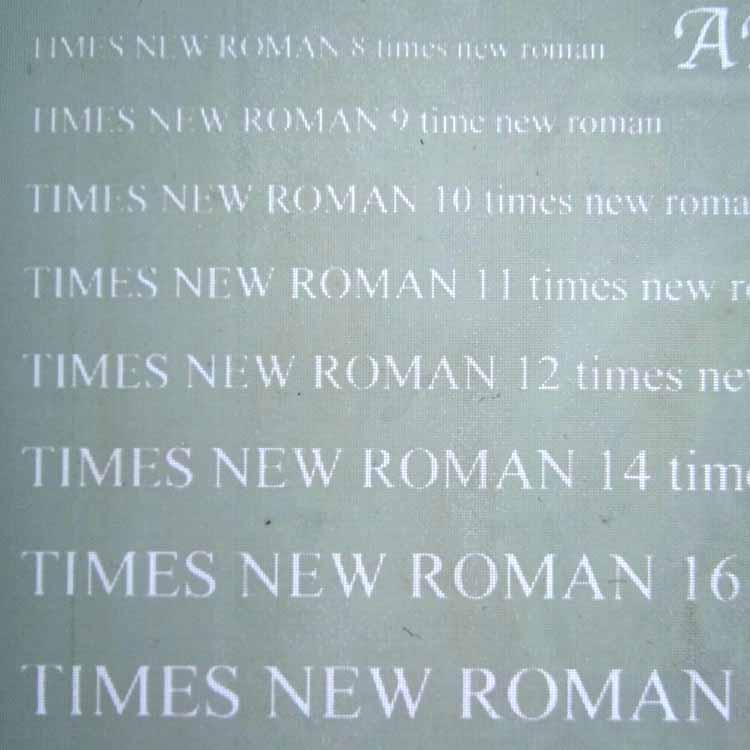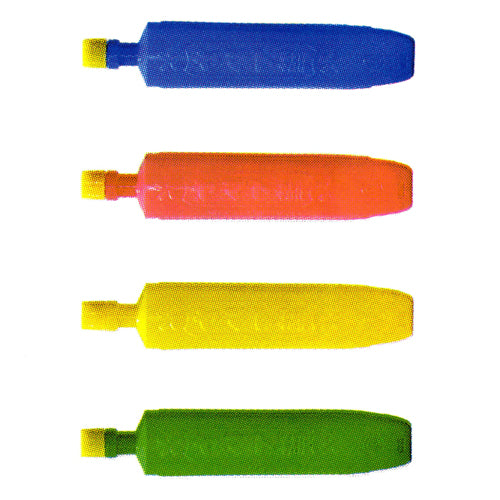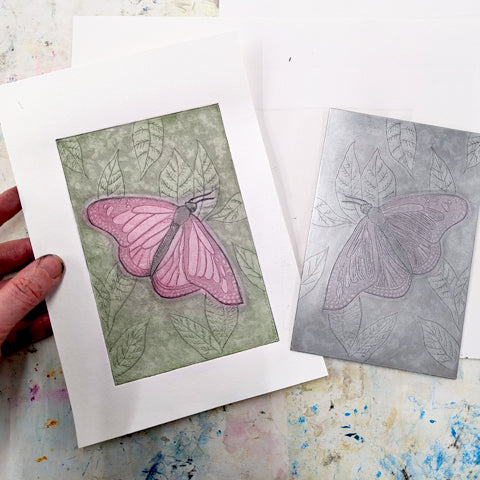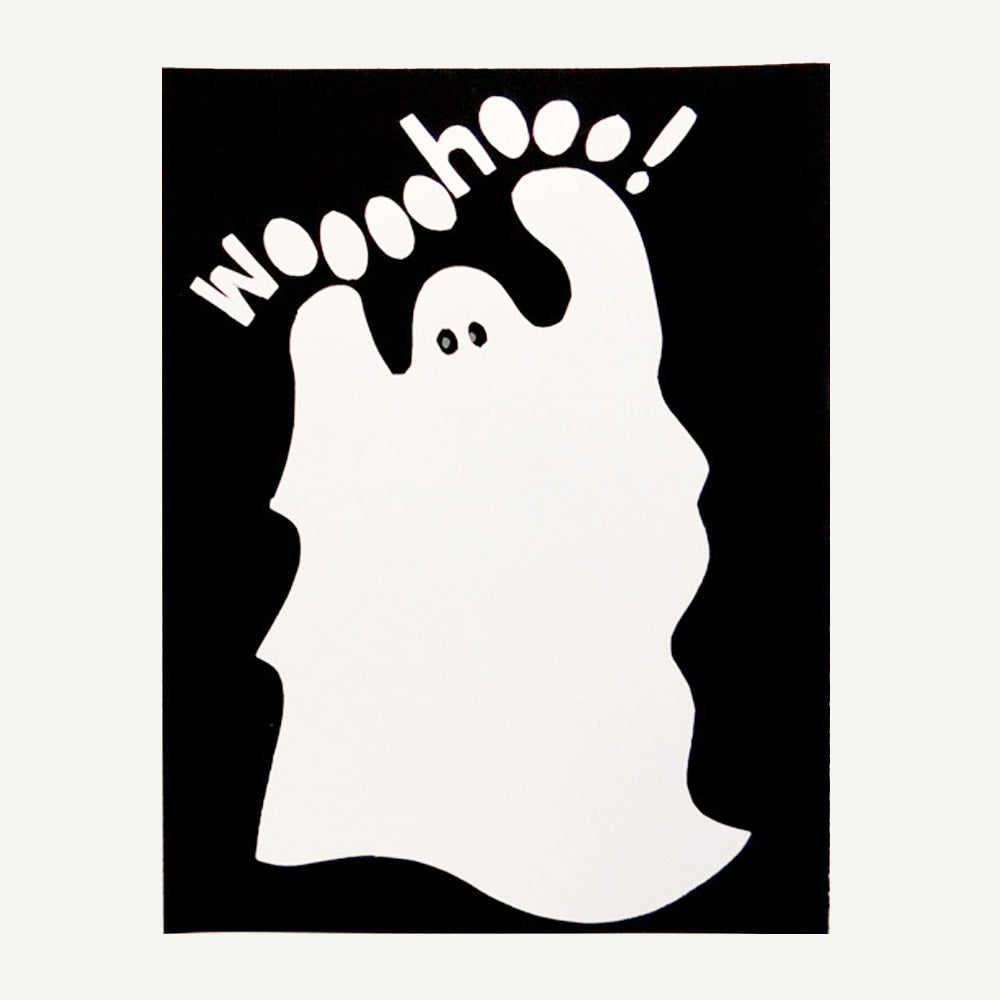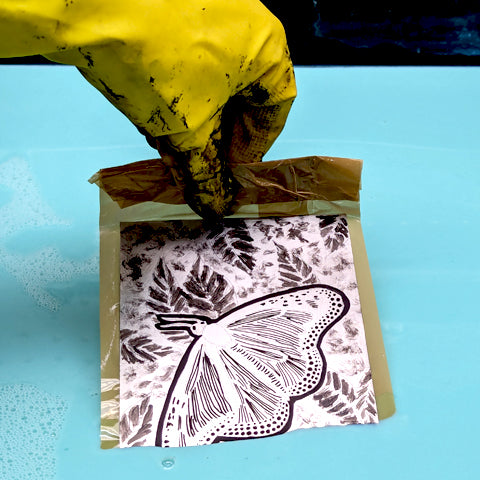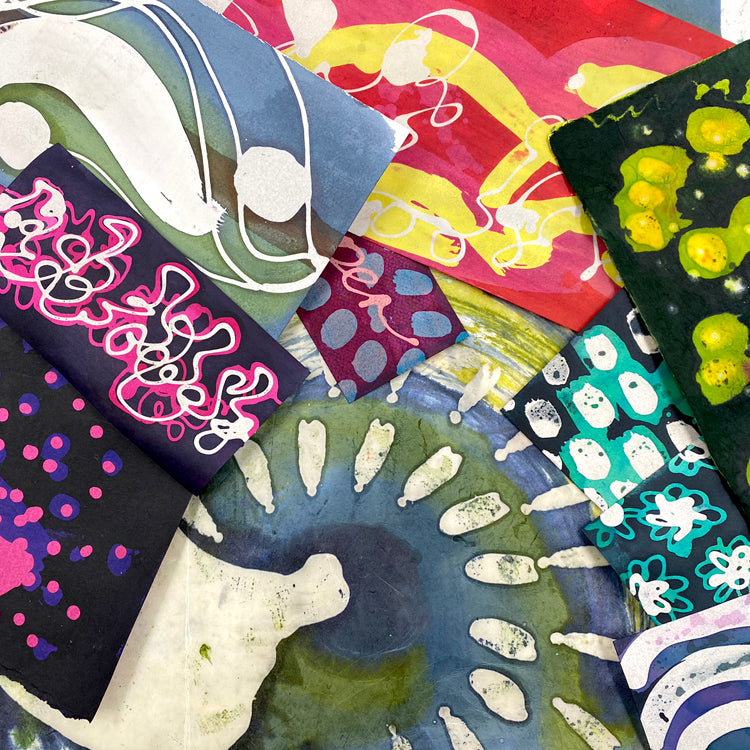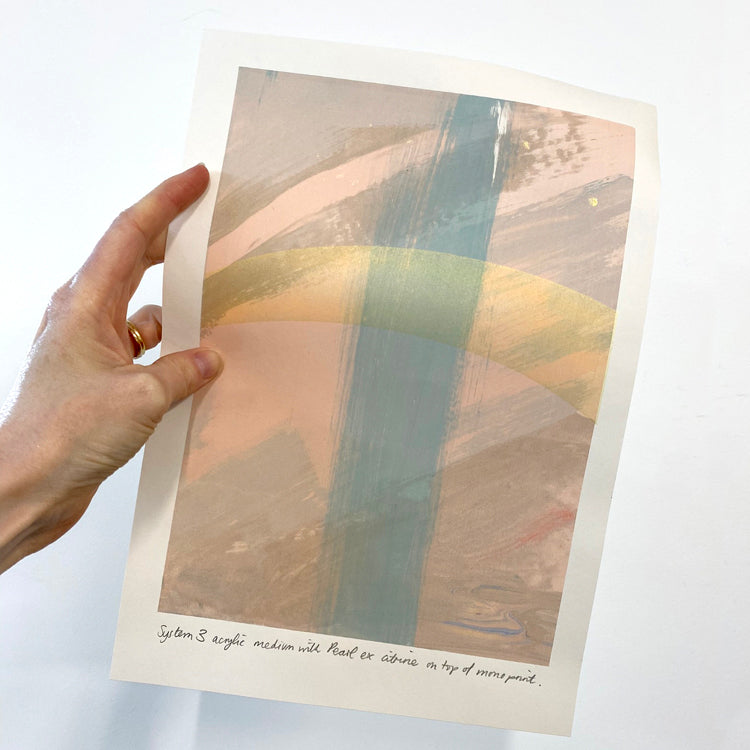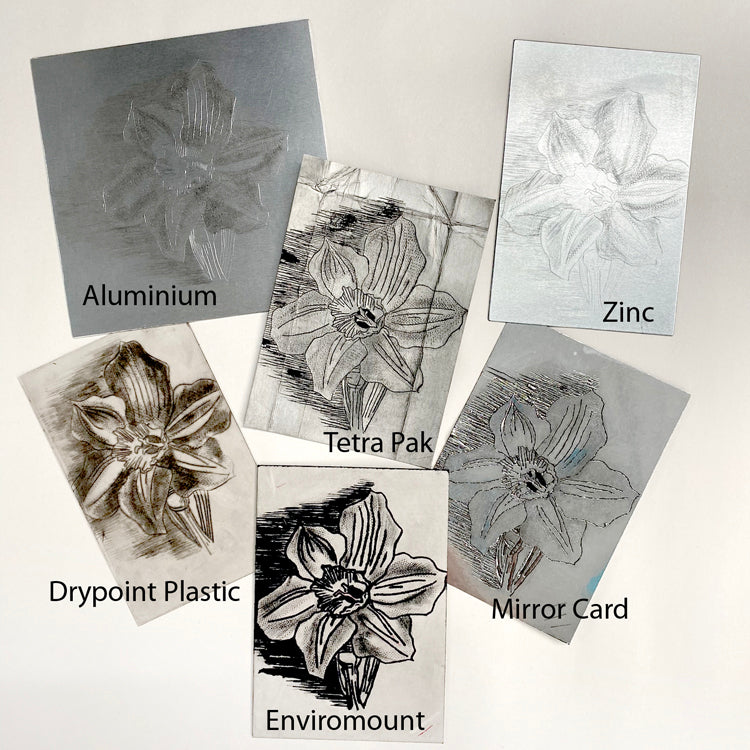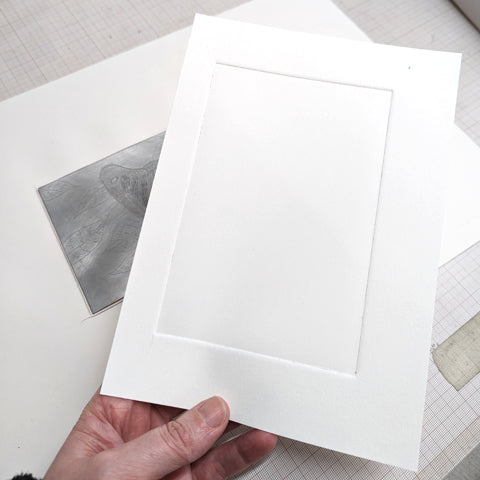Blog - Tutorials
-
When carving traditional lino it can be difficult to see your lines. Staining the block first can enable you to have more visibility, and therefore a more accurate design. Sumi Ink is a great option for block staining, and it's...
-
We wanted to show you a really simple example of how to use the Turns Burton pins and tabs and how they can be used to register block prints with effortless accuracy. We’ve whipped up a quick reduction print and a multi-block to …
-
As the seasons turn we like to have a cosy project on the go. We used orange Speedball Acrylic Screen Printing Ink to create some autumnal themed bunting. Paper bunting in an ideal printing project as it requires multiples! We're...
-
Speedy Carve Blocks are delicious to cut and a joy to print. We have featured them many times in our blog, but this time we have created a process with a three-layered print. For a layered print like this, it's helpful to start with a dra. . .
-
When we first heard the news that Tetra Pak cartons could be used for printmaking, we were excited to try it out. We started to collect all the cartons we had at home and got ready to put them to a new use in the studio. Here’s a little project to get started using Tetra … Continue reading "Tetra Pak Drypoint and Collagraph Printing"
-
One of the problems to overcome when printing a linocut is ink being picked up by the carved away areas of the block. These lines print onto the paper causing 'chatter' or 'noise'. Sometimes chatter on a print can add character or interest to a piece but other times it can just get in the way. This method uses Ternes Burton Pins and Tabs and a piece of Mylar to mask the areas causing chatter. (scroll to the bottom of the page for a video)...
-
When designing artwork for exposed screens it can be very difficult to figure out what level of detail you can include. Different mesh counts will be able to handle different levels of detail. The mesh number relates to how many threads there are per cm of mesh: 32T has 32 threads per cm, 120T has …
-
Block printing onto fabric is such a fun way to create your own designs. Jigsaw printing allows you to carve just one block to print a multi-coloured design. By cutting our carved block into jigsaw pieces we can ink them...
-
Scroll through the list below to find definitions and explanations of common printmaking terms: Acid-free – refers to papers that are made with an alkaline pulp, usually with calcium carbonate added. Acids contribute to the deterioration of paper and therefore of prints. Aisuki – a rounded, bevelled chisel tool used in Japanese Woodblock Printing, often …
-
Monoprinting using an open screen is a wonderfully creative way of using your screen printing equipment for speedy, painterly prints. Neocolor Pastels are a great material to use when mono screen printing - you can draw directly onto the mesh and...
-
Accurate registration can be difficult when printing multi-block linocuts. Offset printing will show you exactly where your design will sit on each block, allowing you to cut a set of blocks that will print in perfect alignment. Begin by preparing...
-
To start, you will need to digitally create your artwork by completing the colour separation process (see our previ...
-
Once you've made an etching plate, it may be ready to print an edition - or you might want to make further edits. Taking a print is the only way you’ll be able to see how your plate is progressing. This blog...
-
Get into the spooky spirit with a Halloween screen printing project! Create t-shirts, tote bags, and poster prints that’re hauntingly fun and frig...
-
CMYK screen printing is a great way of bringing both your photographic and coloured art images to life through colour separation. This is achieved by layering four colours (cyan, magenta, yellow, and black) on top of each. . .
-
We recently covered in our blog how to make marks on etching plates, using tools and resists. Now we’re going to put together what we’ve learnt to create a print!...
-
Batik is a fun, dynamic way of creating bold and beautiful designs on cloth but did you know batik can be made on paper too? We used some Tej Prakrtika paper (as well as testing some others) to create a colourful,...
-
Pearl Ex Powdered Pigments are metallic pigments that can be mixed into printing inks, acrylics, oils, encaustics and loads more. As printmakers we were keen to see how they could be used in various printmaking applications. We've tested them for relief printing and had some love. . .
-
Drypoint is a fantastic intaglio technique as it requires limited equipment to create a plate. It's a great way of creating a printed drawing and is one of the printmaking techniques where the positive mark is the one that prints...
-
When you’ve created an aluminium or zinc plate etching, you’ll want to have a go at pulling your first print. To do this, you’ll need to learn how to prepare your paper and...


